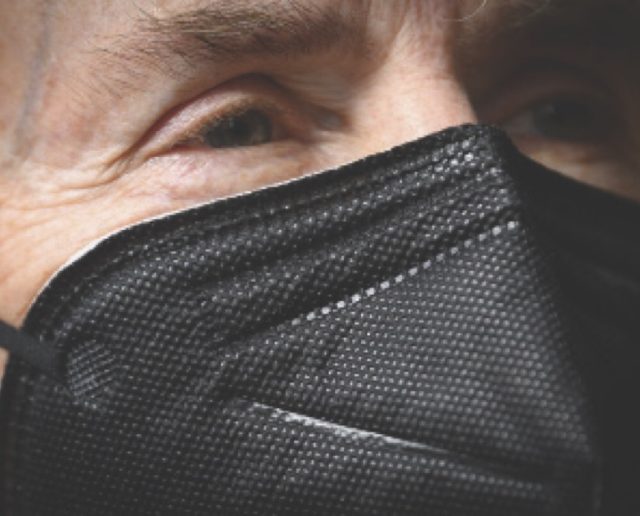Infection
Infection Protection for Fall: COVID-19, Influenza, and RSV
With the unseasonable hot weather over, it’s time to dig out sweaters and see how long we can hold out before turning on the heat. Closed windows and more indoor time can boost the spread of disease-causing germs. But good ventilation and well-filtered air, putting on a well-sealed N95 or KN-95 mask when appropriate, and getting vaccinated are all powerful ways to cut the risks.
Here are answers to some questions about fall vaccines.
I’m Hearing There are Updated COVID Vaccines Right Now
If you’ve heard that updated COVID vaccines are available, you’ve heard right. On Sept. 12, the Centers for Disease Control and Prevention recommended everyone 6 months old and older get an update unless they’ve been vaccinated within the past two months. Pfizer and Moderna have new versions of their life-saving mRNA vaccines, and Novavax’s protein-based vaccine update was also recently approved. All three are federally approved and offer some protection against newer variants of the SARS-CoV-2 coronavirus.
Why Would I Need Yet Another COVID Vaccine?
Unfortunately the virus is still here, and it keeps evolving. Your immune system could benefit from the heads-up in the likely event it encounters SARS-CoV-2 again.
Mind you, vaccines vary in how completely they protect us. Some, like the one against measles virus, basically protect you from infections for life. The COVID vaccine, by contrast, reduces your risk of hospitalization or death while only modestly reducing your risk of infection, and that for a limited time. It does seem to render many infections asymptomatic. There’s evidence it may also reduce your risk of getting long COVID, the lingering symptoms of which can be debilitating.
How About Flu?
October is a good month to get a flu shot, which the CDC recommends for everyone 6 months and older every year. Flu vaccination substantially cuts the chances you’ll need medical care or a hospital stay if you get infected. It’s especially important for people with heart disease, chronic lung disease, or diabetes, and during pregnancy.
Isn’t There a Third Virus that Keeps Making the News?
You may have heard of respiratory syncytial virus (RSV), which kills up to 10,000 adults and as many as 300 kids a year in the United States, not to mention causing millions of hospitalizations. If you’re 60 or older, or in late pregnancy, the CDC advises talking to your provider about an RSV shot. Babies and toddlers are also vulnerable to RSV. For them, there’s nirsevimab, a new FDA-approved antibody given by injection.
Anything I Should Know About When and How to Get These Vaccines?
Don’t wait too long to get vaccinated. Once you’re vaccinated, it takes roughly two weeks for your body to ramp up a full immune response.
You can get all three vaccines at once. Experts with the Infectious Disease Society of America say most people probably should, either in different arms or at least an inch apart. Although doing this may result in some more post-jab side effects such as headache or injection-site soreness, it doesn’t diminish the effectiveness of the vaccines — and one appointment is easier than two or three.
Here’s a tip for adults of large body size: you may want to request a longer needle, because it’s important for the vaccine to reach your muscle. For vaccination in the deltoid muscle of the shoulder, the CDC’s Advisory Committee on Immunization Practices advises either a 1-inch or a 1.5-inch needle for men weighing 152–260 pounds and women weighing 152–200 pounds. Adults weighing more than that should get a 1.5-inch needle, as should people of any size getting an injection in the front of the thigh.
Where are the Updated Vaccines Available?
Vaccines.gov offers a search engine for determining where vaccines are available. Appointments for Pfizer and Moderna vaccines are available in many locations in our area. Novavax is harder to find. As of press time, the Novavax vaccine is available at the Costco in Colchester via appointments or walk-ins, and it may also appear soon at other pharmacy chains, including CVS. Readers may want to monitor the company’s website.
How Can I Keep Track of COVID Here in Vermont?
It’s no longer easy to track the spread of COVID, because the United States is no longer reporting case counts. It does keep track of hospitalizations and deaths, but these rise weeks after infections do.
You can get a better sense of real-time spread from wastewater data. People infected with SARS-CoV-2 shed the virus in their feces, and some cities keep track of how much they’re seeing in wastewater. If the amount is rising, then virus activity is increasing in the area. Monitor nearby levels at burlingtonvt.gov/covid-19/wastewater. Check the CDC’s National Wastewater Surveillance System to see data from other cities.
As for at-home testing, get free rapid antigen tests mailed to your door at COVIDTests.gov, or call 1-800-232-0233 (TTY 1-888-720-7489). Keep in mind a negative result can be inaccurate. Test again in 48 hours if you have symptoms.
Jenny Blair is an independent journalist, writer, and editor specializing in science and medicine. As a Yale-educated and University of Chicago-trained emergency physician, she practiced and taught in urban, rural, and overseas settings before deciding to write full-time. She also leads writing workshops for medical students at SUNY Downstate Health Sciences University.
- Infection Protection for Fall: COVID-19, Influenza, and RSV

